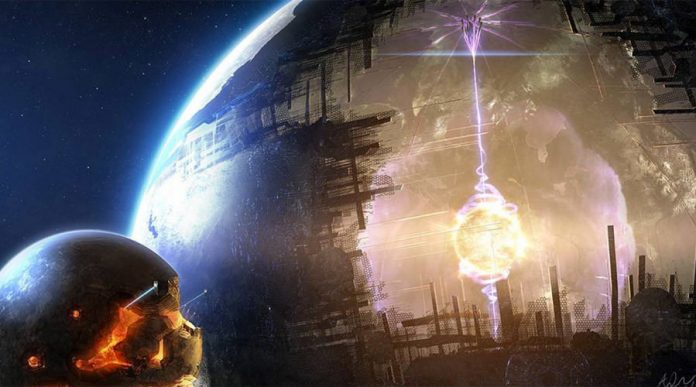The supposed ‘alien megastructure’ first spotted in the skies back in 2015 may actually be a colossal planet-eating star, according to researchers from Columbia and Berkeley.
A new research set to be published in the Monthly Notices of the Royal Astronomical Society has another theory about the dimming pattern of KIC 8462852: It could be caused by the star recently consuming a planet.
The study authors, from Columbia University and the University of California, Berkley, said if the star had consumed a planet, it would have led to a huge episode of brightness that the star is now recouping from; and the remains of the former planet might be passing across the face of the star, causing regular drops in brightness.
To reach their conclusion, the researchers took the initial Kepler data, which revealed abrupt drops of 15 percent and 22 percent in brightness. They then looked at follow-up research studies that examined the long-term behavior of KIC 8462852, also known as Tabby’s Star.
The first study revealed a decrease in 14 percent between the years of 1890 and 1989. The second study concluded that the star diminished by 3 percent during the period of the four years that Kepler looked at it.
The study team then tried to describe the observations based on the Kozai Mechanism, a long-standing technique in astronomy for figuring out the orbits of planets by using their eccentricity and inclination. Using this technique, the team found the star probably ingested one or more planets in the past, probably around 10,000 years ago.
This process would have induced a momentary brightening that the star is now returning from, the study said. The authors said additional periodic drops in brightness might be brought on by the remnants of this planet transiting, or passing in front of the star, in high-eccentricity orbits.
The researcher said the star likely ingested a single Jupiter-sized planet or a large quantity of smaller objects. This latter possibility seems more plausible, as a large quantity of items would have generated a dimming rate seen by previous analyses.
If these conclusions are confirmed, they could have severe significance for the study of stellar development involving stars eating their planets over time.
















What kind of researchers are ‘shocked’ ?. Certainly, not scientists.
Truth is not a scientific concept, anyway. All scientists can do is collect evidence and postulate an explanation.